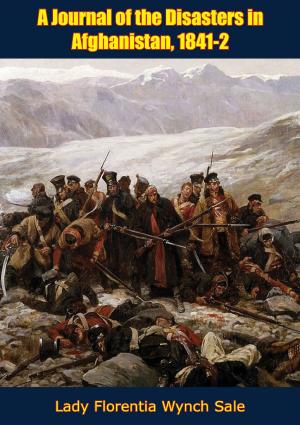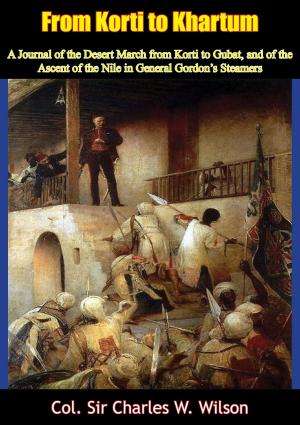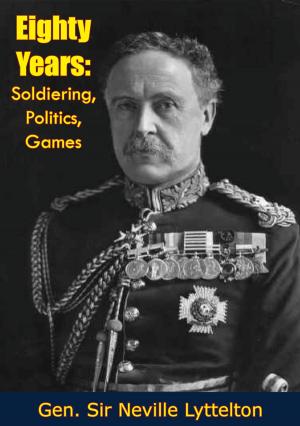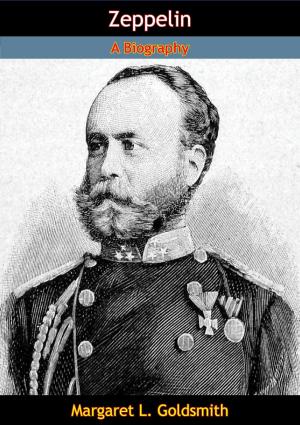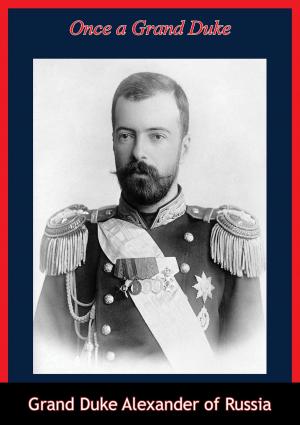Comanche
The Sole Survivor of All the Forces in Custer’s Last Stand, the Battle of the Little Big Horn
Nonfiction, Social & Cultural Studies, Social Science, Cultural Studies, Native American Studies, History, Americas, United States, 19th Century, Biography & Memoir| Author: | Barron Brown | ISBN: | 9781787209046 |
| Publisher: | Borodino Books | Publication: | January 12, 2017 |
| Imprint: | Borodino Books | Language: | English |
| Author: | Barron Brown |
| ISBN: | 9781787209046 |
| Publisher: | Borodino Books |
| Publication: | January 12, 2017 |
| Imprint: | Borodino Books |
| Language: | English |
Comanche, first published in 1935 and beautifully illustrated by the book’s author Barron Brown, is an account of the U.S. Army horse “Comanche,” who survived General George Armstrong Custer’s detachment of the United States 7th Cavalry at the Battle of the Little Bighorn in 1876.
“Comanche” was bought by the U.S. Army in 1868 in St. Louis, Missouri and sent to Fort Leavenworth, Kansas. He was captured in a wild horse roundup on April 3, 1868. Captain Myles Keogh of the 7th Cavalry liked the 15 hands (60 inches, 152 cm) gelding and bought him for his personal mount, to be ridden only in battle.
In 1868, while the army was fighting the Comanche in Kansas, the horse was wounded in the hindquarters by an arrow but continued to carry Keogh in the fight. He named the horse “Comanche” to honor his bravery. “Comanche” was wounded many more times but always exhibited the same toughness.
It was on June 25, 1876 that Captain Keogh rode “Comanche” at the Battle of the Little Bighorn, led by Lt. Col. George Armstrong Custer, in which their entire detachment was killed. U.S. soldiers found “Comanche,” badly wounded, two days after the battle. After being transported to Fort Lincoln, he was slowly nursed back to health. After a lengthy convalescence, “Comanche” was retired.
In June 1879, “Comanche” was brought to Fort Meade by the Seventh Regiment, where he was kept like a prince until 1887. He was taken to Fort Riley, Kansas. As an honor, he was made “Second Commanding Officer” of the 7th Cavalry.
“Comanche” died of colic on November 7, 1891, believed to be 29 years old at the time. He is one of only three horses in U.S. history to be given a military funeral with full military honors, the others were “Black Jack” and “Sergeant Reckless.” His remains were sent to the University of Kansas and preserved, where the taxidermy mount can still be seen today in the university’s Natural History Museum.
Comanche, first published in 1935 and beautifully illustrated by the book’s author Barron Brown, is an account of the U.S. Army horse “Comanche,” who survived General George Armstrong Custer’s detachment of the United States 7th Cavalry at the Battle of the Little Bighorn in 1876.
“Comanche” was bought by the U.S. Army in 1868 in St. Louis, Missouri and sent to Fort Leavenworth, Kansas. He was captured in a wild horse roundup on April 3, 1868. Captain Myles Keogh of the 7th Cavalry liked the 15 hands (60 inches, 152 cm) gelding and bought him for his personal mount, to be ridden only in battle.
In 1868, while the army was fighting the Comanche in Kansas, the horse was wounded in the hindquarters by an arrow but continued to carry Keogh in the fight. He named the horse “Comanche” to honor his bravery. “Comanche” was wounded many more times but always exhibited the same toughness.
It was on June 25, 1876 that Captain Keogh rode “Comanche” at the Battle of the Little Bighorn, led by Lt. Col. George Armstrong Custer, in which their entire detachment was killed. U.S. soldiers found “Comanche,” badly wounded, two days after the battle. After being transported to Fort Lincoln, he was slowly nursed back to health. After a lengthy convalescence, “Comanche” was retired.
In June 1879, “Comanche” was brought to Fort Meade by the Seventh Regiment, where he was kept like a prince until 1887. He was taken to Fort Riley, Kansas. As an honor, he was made “Second Commanding Officer” of the 7th Cavalry.
“Comanche” died of colic on November 7, 1891, believed to be 29 years old at the time. He is one of only three horses in U.S. history to be given a military funeral with full military honors, the others were “Black Jack” and “Sergeant Reckless.” His remains were sent to the University of Kansas and preserved, where the taxidermy mount can still be seen today in the university’s Natural History Museum.


